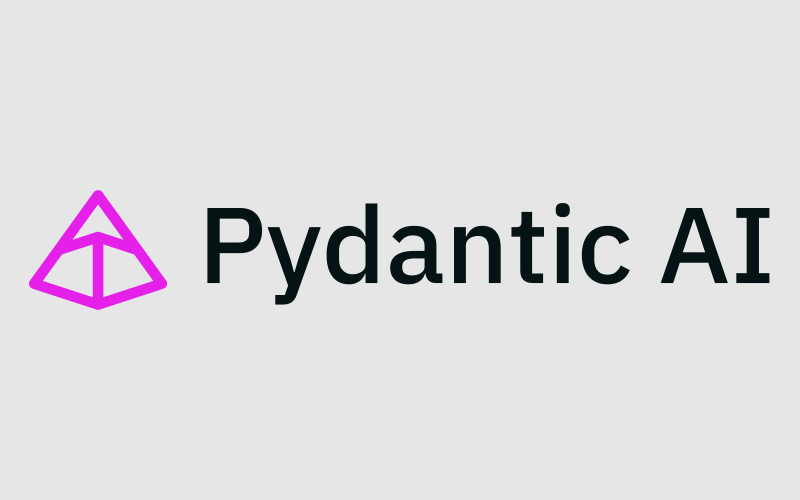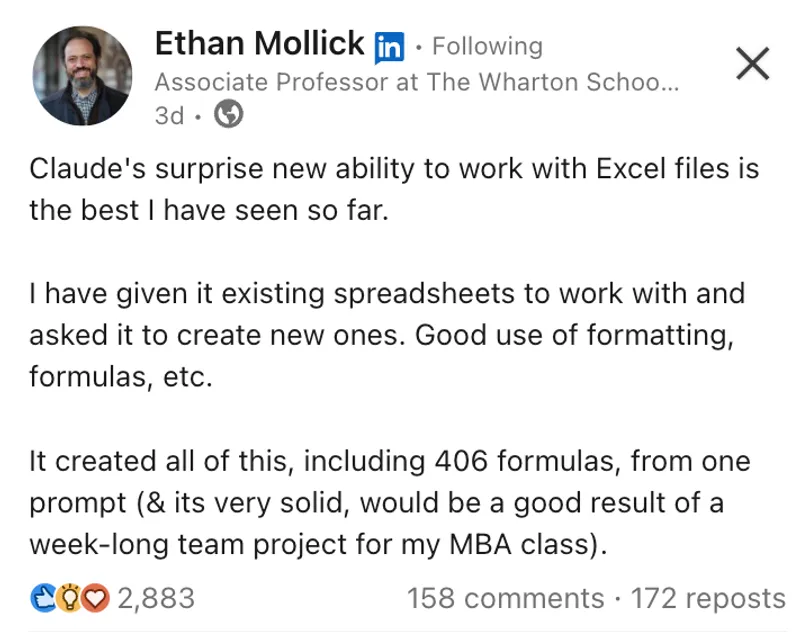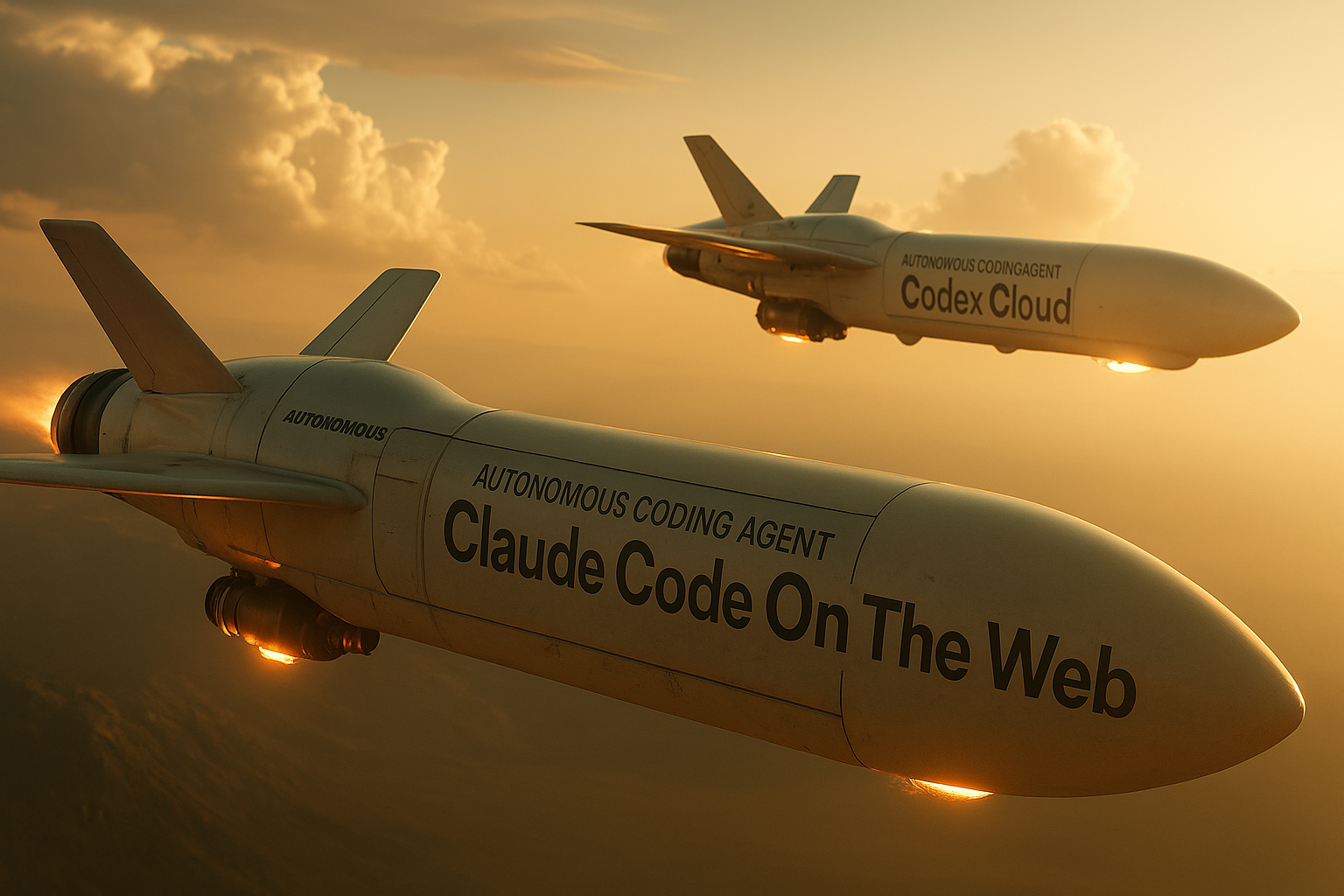Pydantic AI Reaches v1
Which, for me, begged the question, what exactly is Pydantic AI?

As I wrote recently in ChatGPT 5 Thinking Is So Damn Smart:
I spent some time at the Pydantic booth at the AI Engineer World’s Fair in SF this June. Today, I got their announcement that Pydantic AI v1 is out, and decided to write about it.
The point of that post was how superbly GPT-5 Thinking filled in my knowledge gaps around Pydantic AI. As I sat down to write this post, however, I realized that ChatGPT’s briefing document should actually BE the core of this post. That document was a joint effort—I conceived the need, I asked the questions, I played critic and editor through dozens of iterations—GPT5 Thinking did the research, drafting and rewriting.
I write as a learning exercise, but spending hours or days to improve upon the cto4ai’s Field Guide to Pydantic AI below would have impeded rather than furthered my learning.
Ethan Mollick recently shared his experience working with Claude’s new Excel-spreadsheet-editing features:
Just as Claude had produced a very solid solution that would have taken Mollick’s team of MBA students a week to reproduce, so too had ChatGPT 5 Thinking produced a very solid Field Guide to Pydantic AI. So I’ll just post this Guide and move on to the next learning exercise in my very long queue, having learned plenty my the role as its editor.
cto4ai’s Field Guide to Pydantic AI
This Field Guide covers the technical aspects and strategic considerations of Pydantic AI, for CTOs, engineering leaders, and company leadership.
Part 1: Core Features & Framework Comparison
Deep dive into Pydantic AI's core capabilities, architecture, and comparison with competing frameworks like LangGraph, LlamaIndex, and Semantic Kernel.
Pydantic AI v1 — CTO Field Guide (Part 1: Core + Comparison)
Last updated: 2025-09-13 (America/Chicago)
TL;DR
- What it is: a Python agent framework from the Pydantic team that brings FastAPI‑style ergonomics, type‑safe I/O, and dependency injection to LLM apps. It’s provider‑agnostic, integrates with MCP, AG‑UI, and OpenTelemetry/Logfire, and now ships v1 API stability.
Sources: Docs, V1 announcement, Changelog & stability policy - Niche: developer‑centric, typed agents with first‑class observability and production surfaces (durable execution, human‑in‑the‑loop UI protocol). Competitors include LangGraph, LlamaIndex, Semantic Kernel, DSPy, CrewAI.
Sources: LangGraph, LlamaIndex Agents, Semantic Kernel Agent Framework, DSPy, CrewAI
What is Pydantic AI?
Pydantic AI is a GenAI agent framework for Python that emphasizes type‑safety, validation, and developer ergonomics (think: FastAPI for agents). You define an Agent with clear input/output types, add function tools, wire dependencies via DI, and run on any supported model provider.
- Homepage / Docs: ai.pydantic.dev
- Agents (concepts & API): Concepts, API
- Dependency Injection: Dependencies
- Model providers: Overview
Why it matters
- Type‑checked outputs reduce brittle prompt‑parsing.
- DI keeps tools and prompts clean and testable.
- Provider‑agnostic lets you swap models without rewriting app code.
- Observability via OpenTelemetry + Pydantic Logfire gives you traces/spans of prompts, tool calls, and model requests.
Sources: Logfire docs, Logfire product
The niche it fills (and who else is in it)
Pydantic AI focuses on typed, testable, production‑grade agents with built‑in observability and durability.
| Framework | Sweet Spot | Typing/DI | Orchestration | Standards & UX | Observability |
|---|---|---|---|---|---|
| Pydantic AI | Typed agents; DI; portability | Strong (Pydantic types, DI) | Graphs & multi‑agent patterns; durable exec via Temporal/DBOS | MCP (client/server), AG‑UI, A2A | OTel + Logfire; other OTel backends |
| LangGraph | Complex agent workflows/state machines | Pythonic types; DI N/A | Graph orchestration, stateful agents | Human‑in‑loop & “time‑travel” in platform | LangSmith integration (platform) |
| LlamaIndex | Data/RAG‑heavy apps; agents + workflows | Pythonic types; DI varies | Workflows + agents | Ecosystem tools, LlamaCloud | LlamaCloud / community tools |
| Semantic Kernel | Enterprise SDK across C#/.NET, Python, Java | SDK types; plugin system | Single/multi‑agent patterns | Plugin ecosystem | Azure/enterprise integrations |
| DSPy | Programmatic LLM pipelines w/ auto‑compile/evals | Declarative modules, compiles programs | Pipelines; can drive agent loops | Research‑centric; evals/optimizers | Ecosystem integrations |
| CrewAI | Multi‑agent “crews”, YAML first, enterprise builder | Pydantic models for structured output | Crew/flow orchestration | MCP integrations; visual builder | Integrates with Langfuse/others |
Sources: LangGraph, LlamaIndex Agents, Semantic Kernel Agent Framework, DSPy, CrewAI Agents
Positioning takeaway: If you want Python‑native typing/validation, clear DI, portable providers, open standards (MCP/A2A/OTel) and observability out‑of‑the‑box, Pydantic AI is the most “software‑engineering‑friendly” choice right now.
When would I use Pydantic AI? (versus alternatives)
| Scenario | Choose Pydantic AI if… | Consider Alternative(s) | Notes |
|---|---|---|---|
| Typed contracts to your app (strict JSON / enums / schemas); easy testing | You want first-class typing/validation and FastAPI-style DI, and you’ll swap providers without rewrites | LangGraph + Pydantic models; DSPy for programmatic pipelines | Pydantic AI’s type safety + DI keeps tools/business logic clean and testable |
| Complex, stateful multi-agent graphs with node-level checkpointing and time-travel | Your graph is moderate and you prefer plain Python + DI | LangGraph | LangGraph excels at large graphs and recovery tooling |
| Heavy RAG / knowledge work (indexes, retrievers, query engines) | You’ll still orchestrate agents/tools in Python and plug retrieval underneath | LlamaIndex, LangChain RAG | Use Pydantic AI for the agent layer; call into a RAG lib as a tool |
| Cross-language enterprise SDKs (C#, Java) and Azure tilt | You’re all-Python today | Semantic Kernel | SK shines when you need multi-language parity and Azure integrations |
| Auto-optimization of prompts/pipelines; researchy LLM programming | You want app-level agents more than compiler-style optimization | DSPy | Pairing Pydantic AI + DSPy is common: DSPy optimizes, Pydantic AI orchestrates |
| Standards-forward UX & tools (MCP, AG-UI, A2A) | You want out-of-box MCP tools/servers and a consistent agent↔UI protocol | LangGraph (platform features), CrewAI (builder) | Pydantic AI bakes MCP/AG-UI/A2A into the core story |
| Observability-first (OpenTelemetry, redaction, cost/trace views) | You want vendor-neutral OTel plus deep Logfire hooks | LangSmith (LangChain), Langfuse/Weave (3rd-party) | Pydantic AI has OTel primitives; Logfire adds rich traces/costs |
| Durable execution / human-in-loop over hours–days | You like Temporal/DBOS-style durability with Python code | LangGraph (checkpointing), bespoke workflow engines | Pydantic AI documents Temporal/DBOS patterns for robust durability |
| Python/FastAPI shop, want simple DI and clean test seams | Your team’s muscle memory is Pydantic/FastAPI | — | Lowest friction path for Python backends |
| Low-code multi-agent builder for non-dev teammates | You want a visual builder & hosted flows | CrewAI (builder), LangGraph Studio | Pydantic AI is code-first; great for engineers, less for no-code |
Quick checklist: use Pydantic AI when…
- You need typed, validated outputs/tools (schemas, enums, auto‑retry on schema fail).
- You want FastAPI‑style DI to inject DB clients, secrets, and services cleanly.
- You need provider portability (OpenAI ↔ Anthropic ↔ Groq/Bedrock/HF) without rewrites.
- You care about observability from day 1 (OpenTelemetry + optional Logfire, cost/redaction).
- You need durable/human‑in‑loop flows or standards like MCP/AG‑UI/A2A.
What’s new & unique in v1
- API Stability Commitment — no breaking changes until v2 (earliest April 2026).
Source: Changelog & policy - Observability as a first‑class citizen — native OpenTelemetry spans; optional Logfire with deep views and HTTP capture.
Source: Logfire docs - Open standards baked in — MCP, AG‑UI, A2A.
Sources: MCP, AG‑UI, A2A - Durable execution — examples for Temporal and DBOS.
Sources: Overview, Temporal, DBOS - Provider‑agnostic models — OpenAI/Anthropic/Gemini/Groq/Mistral/Cohere/Bedrock/HF.
Source: Model providers
Quick mental model (how it fits together)
- Agent: typed instructions + tools + output type.
Source: Agents - Tools: Python functions; input/return types enforce structure; DI injects clients/secrets.
Source: Function Tools - Dependencies (DI): dataclass or Pydantic model passed to runs and tools.
Source: Dependencies - Providers: defined by string IDs (e.g.,
openai:gpt‑4o,anthropic:claude‑3‑5).
Source: Providers - Observability/Durability/UX: OTel + Logfire; Temporal/DBOS; MCP & AG‑UI.
Sources: Logfire, Durable exec, MCP, AG‑UI
Part 2: Links, Resources & Strategic Analysis
Curated resources, industry perspectives, and strategic considerations for adopting Pydantic AI in your organization.
Pydantic AI v1 — CTO Field Guide (Part 2: Links, Media, Editor’s Angle)
Last updated: 2025‑09‑13 (America/Chicago)
Light comparison notes
Pydantic AI vs. LangGraph
- Choose Pydantic AI if you value typing/DI, provider portability and OTel/Logfire out‑of‑box.
- Choose LangGraph if your primary challenge is complex multi‑agent orchestration with checkpointing/state machines (and you’re okay leaning on LangSmith/Platform).
Source: LangGraph overview
Pydantic AI vs. LlamaIndex
- Choose Pydantic AI for typed agents + DI and provider portability.
- Choose LlamaIndex when your app is RAG/data‑heavy and you want its retrieval ecosystem/workflows.
Source: LlamaIndex Agents
Pydantic AI vs. Semantic Kernel
- Choose Pydantic AI for Python‑first ergonomics and DI;
- Choose SK if you need multi‑language SDKs and Azure‑oriented enterprise patterns.
Sources: SK Agent Framework, SK overview
Pydantic AI vs. DSPy
- Choose Pydantic AI for app‑level agents;
- Choose DSPy when you want programmatic pipelines that compile to better prompts/weights and integrate into your stack for optimization/evals.
Sources: DSPy, DSPy paper
Pydantic AI vs. CrewAI
- Choose Pydantic AI when you want typed agents + DI and standards (MCP/AG‑UI/A2A);
- Choose CrewAI for multi‑agent “crew” orchestration and visual builder/enterprise features.
Source: CrewAI Agents
Recent podcast & video appearances (last ~60–90 days)
- Software Engineering Radio #676 — Samuel Colvin on Pydantic & Pydantic AI (2025‑07‑10).
Links: Episode page, Apple Podcasts - YouTube (Pydantic channel): Pydantic AI — MCP Sampling (published ~2 months ago).
Link: Video - YouTube (AI Engineer World’s Fair): MCP is all you need — Samuel Colvin (published ~2–3 months ago).
Link: Video
If you want a tighter 60–90 day window by exact publish date, use the timestamps above.
Release notes & ecosystem links
- V1 announcement (2025‑09‑04): Blog post
- Releases: GitHub releases, PyPI
- Stability policy: Changelog (V1 policy & timeline)
- Observability: Logfire docs, Logfire product
- Standards: MCP, AG‑UI, A2A
- Durability: Overview, Temporal, DBOS
- Examples: How to run them
Editor’s angle (for cto4.ai)
If you like FastAPI and Pydantic, this is the closest thing to that experience for agents: you get deterministic interfaces (types), clean injection of real services, model portability, and production add‑ons (OTel, Logfire, MCP, AG‑UI, Temporal/DBOS) that reduce time‑to‑prod. The trade‑off vs. a heavy orchestration platform is that you’ll compose more of your own workflow control—by design, it keeps you in normal Python.



